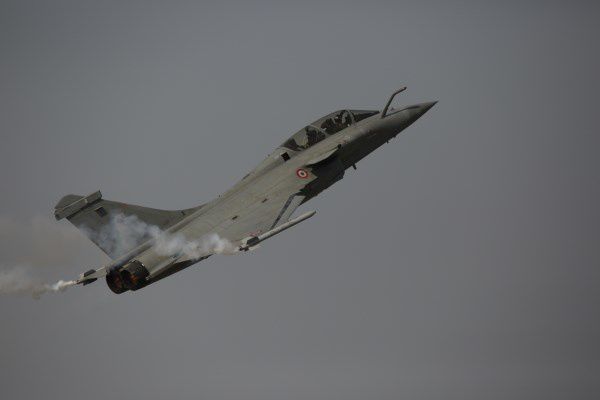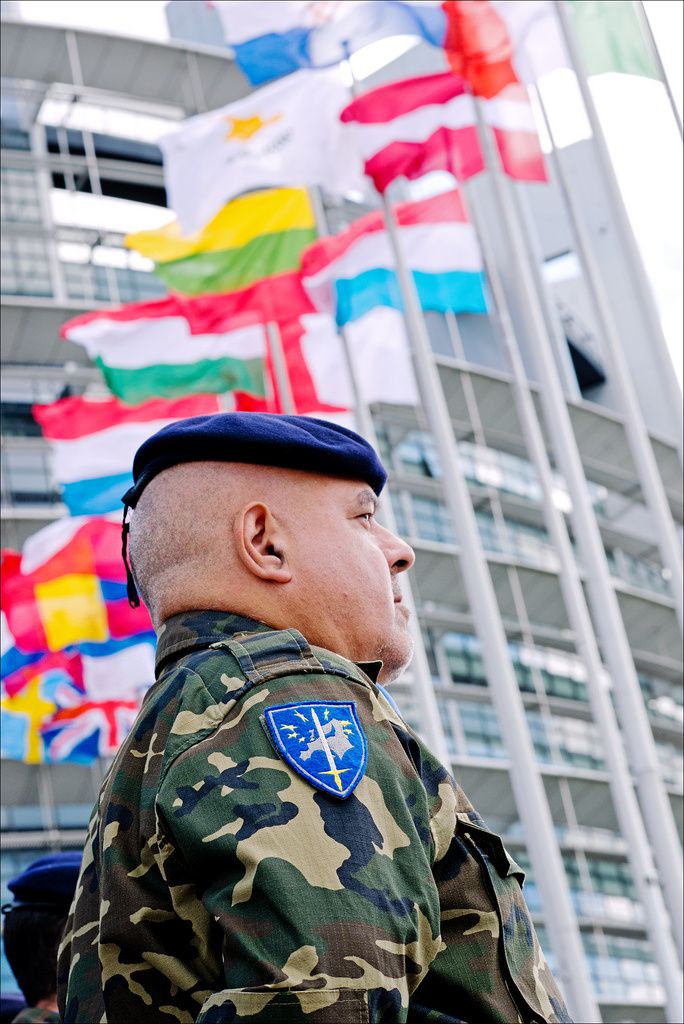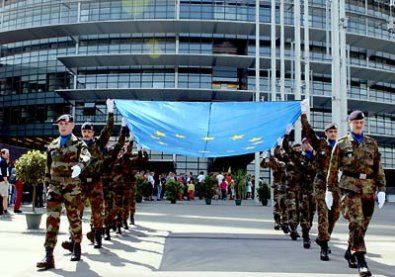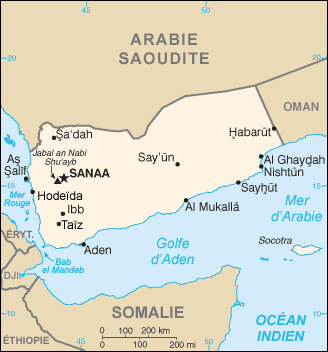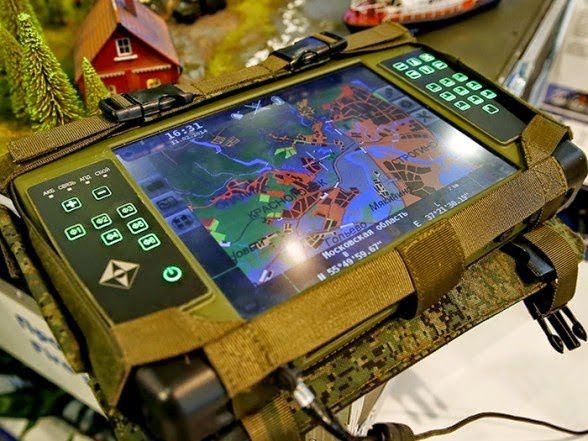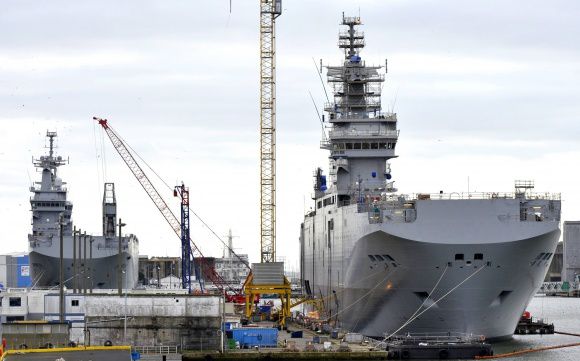March 8, 2015: Strategy Page
The Shia rebels have declare themselves the legitimate rulers of Yemen, but they only control about a third of it. Shia militiamen occupy nearly half the country but in central Yemen the majority Sunnis are resisting with demonstrations and armed violence. The last elected leaders have set up a new capital in the southern port of Aden. There are now frequent attacks against Shia rebels in Baida, Marib, Ibb and Hadramout provinces. The Shia rebels are now trying to obtain aid, investment and diplomatic support from Russia and China, two countries that have long supported Iran. Over 80 percent of the 77 million people living in the Arabian Peninsula are Sunni and they are heavily armed and, at the moment, violently opposed to Shia Iran (the de facto head of Shia Islam). Over 80 percent of all Moslems are Sunni and the most holy shrines for all Moslems are in Saudi Arabia under the control of a very Sunni monarchy. The Yemeni Shia are aware of this which is why so many of them back making a peace deal with the Yemeni Sunnis and accepting as much as they can get. While the Sunni government in Aden is willing to talk, they are also asking for military assistance from the GCC. Many foreign embassies that had left the capital have now reopened in Aden. The U.S. “embassy” for Yemen is now being run out of the American consulate in the Saudi Arabian Red Sea port of Jeddah. Arab and Western nations are mobilizing economic support for the Aden government.
All this Shia success comes from the fact that the Shia rebels from the north allied themselves with former president Ali Abdullah Saleh (who is from a small Shia tribe near the capital) who was forced out in 2012 and refused to leave the country. Saleh supported (secretly at first but now openly) the Shia rebels and now he has called on military officers who were close to him (many of the senior ones were) to get their troops to join the Shia. Many of the Sunni troops refused or simply deserted. With many army bases undermanned Shia rebels have, pro-Hadi tribesmen and AQAP have been scrambling to take as many bases (and the weapons and other supplies they hold) as they can before all have new, and more determined, owners. Saleh’s successor (Hadi) proved unable to reassemble the coalition Saleh relied on for decades to run the country. Then again, when the Arab Spring came along in 2011 the Saleh coalition showed its age and crumbled.
The northern Shia have been fighting for years to get back the autonomy they enjoyed for generations. When Saleh was in power, he fought this autonomy movement. Now that Saleh is out of power, he backs his fellow Shia to get, many believe, Saleh back in power. There are still many Yemenis who have a grudge against the government formed after the civil war that ended, sort of, in 1994. That war was caused by the fact that, when the British left Yemen in 1967, their former colony in Aden became one of two countries called Yemen. The two parts of Yemen finally united in 1990, but a civil war in 1994 was needed to seal the deal. That fix didn't really take, and the north and south kept pulling apart. This comes back to the fact that Yemen has always been a region, not a country. Like most of the rest of the Persian Gulf and Horn of Africa region, the normal form of government, until the last century or so, were wealthier coastal city states, nervously coexisting with interior tribes that got by on herding or farming (or a little of both). This whole "nation" idea is still looked on with some suspicion by many in the region. This is why the most common forms of government are the more familiar ones of antiquity (kingdom, emirate or modern variation in the form of a hereditary dictatorship.)
Many southerners feel they got shortchanged by the 1990 unification deal, and were harshly put down in 1994 when they rebelled. The southern separatists were always disunited and unable mount a strong resistance to government control. The government kept the peace by paying off enough southern dissidents to prevent another civil war. The Shia tribes up north have been demanding more autonomy for decades, and the Sunni tribes up there oppose that for obvious reasons. For centuries the Shia tribes of the north were largely autonomous but in the 1960s that officially ended. The reality was that many of the Shia tribesmen continued to act like they still had their traditional violence and the national government ignored that as much as they could. The Shia violence got worse after 2004 and escalated further when most Yemenis joined the Arab Spring movement in 2011 and removed a long-time government headed by a northern Shia. While the north has several entirely Shia tribes, Sunnis and Shia had lived together peacefully throughout Yemen for centuries and usually used the same mosques (some led by Shia clergy, most by Sunnis). That tradition was now being attacked by Yemeni Sunnis who are using violence or threats of violence to drive Shia from mosques throughout the country. This is a widely unpopular move, but the Sunni Islamic radicals are on a Mission From God not a popularity contest. The Sunni radicals also accuse Yemeni Shia of being agents for Iran which was for a long time only true in a few instances. Until recently the Shia tribes renounced any Iranian connection because they were caught between a Sunni majority to the south and a Sunni (and very anti-Iran) Saudi Arabia to the north. Just across the border there are related Shia tribes in Saudi Arabia, who have long since learned to keep quiet and enjoy the slice of Saudi oil wealth they receive from the government. Moreover the Saudi Shia are a smaller fraction of the population and separated, not concentrated as the Yemeni Shia are. In Yemen Shia are about a third of the 24 million population and most of them live in the north.
It is unclear when the military and the Sunni tribes will succeed in resisting and defeating the growing Shia power. This is far from a sure thing since needs a new coalition to run the country because the one that existed until September 2014 ceased to function long before president Hadi was forced out in January 2015. Once the Shia rebels occupied the capital in late 2014 and then a growing number of cities and provinces to the south it was obvious the Shia would have a lot to say about the next government. Now the Shia claim they are the government and Iranians worry that this will turn into another expensive foreign obligation (like Hezbollah and the military aid efforts in Iraq and Syria, not to mention financial aid to Hamas in Gaza and several similar entanglements). All this military foreign aid is unpopular with most Iranians who would rather see the money spent at home. Iran officially has nothing to do with what is going on in Yemen but Arabs know that the “victory” in Yemen is being celebrated in the streets of Iran (at least in conversation) and increasingly in Iranian media as well. This is humiliating for the GCC (Gulf Cooperation Council, the Arab oil states in the Persian Gulf) members and Sunnis in general. Iran has not directly intervened (but is suspected of supplying the Yemen Shia with cash and advice). Now Iran is officially an ally and supporter of the new Shia government. The Sunni hope and the Shia nightmare is military intervention by the Saudis, but that’s not the Saudi style. The Saudis don’t want to see their armed forces tied down in Yemen, not when Iran remains a major, and growing, threat. Then there is the ISIL threat in Syria and Iraq (and, to a lesser extent, inside Saudi Arabia itself). There is no easy way out of this mess for anyone. The customary way these things are settled in Arabia is by making deals. The Yemeni Shia have made it clear that Iran is their friend and expect help from that direction. Most Yemeni Shia don’t want the religious fanaticism of Iran but are willing to accept aid from Iran and work to make Sunni majority Yemen a “friend“ of Iran (much like the Shia minority has done in Lebanon and Syria). The Saudis and GCC are very hostile to this sort of thing but reluctant to go to war over it. That may change now that the Yemeni Shia rebels have officially declared themselves the rulers of Yemen even though they control only the capital and the north (about a third of the country).
And then there’s the oil. Revenue from oil exports in 2014 was $1.67 billion. That’s down from $2.66 billion in 2013. Falling oil prices and pipeline attacks by angry tribesmen cost Yemen a billion dollars in lost oil income in 2014. Normally Yemen produces 270,000 barrels of oil a day and most of it is exported (accounting, with natural gas, 90 percent of export income). The 320 kilometer long pipeline extends from oil fields in Marib province to the Red Sea export terminal. Such attacks cost the government a billion dollars in lost revenue in 2013. Tribesmen loyal to deposed president Saleh are often blamed. President Hadi caused some bad feeling in Marib when he cut cash payments going to pro-Saleh tribal leaders and instead gave it to those he trusted more. The tribesmen who lost out responded in the traditional way, by attacking the assets of those they saw as responsible; namely the oil fields and pipelines. AQAP has been popular in Marib because the Islamic terrorists will hire local tribesmen and promise a larger share of gas and oil income for the local tribes once AQAP takes control of the country.
Marib is where local Sunni tribes have assembled a large force of gunmen to defend or destroy those valuable oil and gas facilities. Worse yet tribal leaders say that if the Shia enter Marib this will mean the shutdown of energy supplies to key power plants that keep the lights on in most of the country. In January tribal leaders called for up to thirty thousand armed tribesmen to gather in Marib to fight the Shia rebels. This buildup was not completed as the Shia rebels quietly agreed to maintain the November peace deal. Back then three of the most powerful tribes in Marib province united and worked out a peace deal with the approaching Shia rebels. In essence the deal guaranteed the safety of Shia in Marib and in return the Shia rebels would not try to enter Marib and take over. The three tribes in Marib are powerful and have a reputation for being determined fighters. The Shia rebels are still nearby but are less likely to advance now that Marib is the assembly point for anti-Shia tribesmen. To further complicate matters tribal leaders in what is locally known as the “Sheba region” (Marib, Baida and Jawf provinces) have apparently united, despite the many feuds and disagreements among them. The Shia are seen as a common threat. Recently the Sunni tribes of Marib closed the border with Baida province, which is largely controlled by Shia rebels.
March 1, 2015: For the first time since 1990 a direct flight from Iran landed in Yemen. The transport was carrying medical supplies and arrived in the capital at the same time that Arab countries were moving their embassies south to the port city of Aden, which is not yet under control of the Shia rebels who have been advancing south since 2014. On February 21st the elected president (Hadi) of Yemen fled the capital and, in effect, moved the government to Aden. At the moment the Shia rebels have control of northern Yemen but the Sunni majority, in the form of the armed Sunni tribes, are preventing a Shia advance any farther south. Meanwhile Iran announced that it will now carry out regular (14 flights a week) service between Iran and the Yemeni capital. Iranians have been warned that Sunni Islamic terrorists (ISIL and al Qaeda) are very active in Yemen and will be seeking to kill or kidnap Iranian visitors.
March 7, 2015: The Defense Minister of the elected government fled house arrest in the capital and is believed headed for the new capital in Aden. The Defense Minister was arrested by Shia rebels on February 6th when the rebels took complete control of the capital. In Aden the last elected president (Hadi) declared Aden the national capital and that the traditional capital (Sanna) an occupied (by Shia rebels) city. Hadi declared that five of the countries six regions had pledged allegiance to the Aden government and support for armed opposition to the Shia rebels. There are now frequent attacks against Shia rebels in Baida, Marib, Ibb and Hadramout provinces. Shia living in southern Yemen have held pro-Shia demonstrations, which are not interfered with. The anti-Shia demonstrators often face gunfire and sometimes arrest (which the Sunnis call kidnapping, which is what is sometimes turns into because a large payment is demanded for the release of these demonstrators).
In the south (Ibb province) Shia rebels used gunfire to disperse an anti-Shia protest in the provincial capital. There were casualties among the demonstrators and some were arrested by the Shia.
March 6, 2015: A second air freight flight from Iran landed at the airport outside Sanna. Both of these transports were said to contain “humanitarian cargo.” Yemeni Shia envoys in Iran asked Iran to set up cultural centers and a museum of Persian art in Yemen.
March 5, 2015: An Iranian diplomat captured by AQAP (Al Qaeda in the Arabian Peninsula) Islamic terrorists in Yemen in 2013 arrived back in Iran. He was freed by Iranian commandos who now operate openly in Sanna. The Yemeni rebels denied that Iranian commandos are in Yemen.
March 3, 2015: In the south (Baida province) two AQAP attacks on Shia rebels left three Islamic terrorists and twelve Shia dead. In February the Shia rebels took control of much of Baida province.
March 2, 2015: A Saudi diplomat held by AQAP was freed by the unspecified actions of the Saudi intelligence services. Back in August 2012 the captive was to be released after everyone had agreed on a $10 million ransom. But at the last minute al Qaeda leaders changed their mind and demanded $20 million. At that point negotiations stalled. The Saudi diplomat was kidnapped last March. AQAP needed cash to keep its terror campaign going and the Saudis decided to explore other options to get their diplomat back.
March 1, 2015: An Iranian commercial flight from Iran landed at the airport outside Sanna. This was the first Iranian aircraft to land in Yemen since 1990.
February 28, 2015: In Yemen the Shia rebels in control of the capital and most of the north signed an agreement with Iran to enable, for the first time, commercial air traffic between the two countries. At the same time the Shia rebels withdrew from UN sponsored talks over the future of Yemen until a location for the talks outside Yemen could be found and agreed on. In the south (Lahj province) Shia rebels fired on an army convoy and wounded nine soldiers. This was believed another attempt to kidnap some soldiers to hold as hostages in an effort to get the army to turn over a nearby army base to Shia control. Elsewhere in the south (Shabwa province) three Islamic terrorists were killed by missiles from an American UAV. This is the fifth such attack in February. These attacks have left at least a fifteen Islamic terrorists and at least one civilian (a 12 year old boy travelling with one of the Islamic terrorists) dead.
February 27, 2015: In the south (Lahj province) AQAP ambushed an army truck at night and killed four soldiers.
February 26, 2015: The Shia rebel leader openly blamed Saudi Arabia for all the chaos in Yemen. The Saudis have been involved but not nearly as much as Yemeni Sunnis (and Arabian Sunnis in general) would prefer. The Saudis are slow to act but when they do move it is usually with great impact and resolve (as with their current efforts to keep the world oil price low to hurt Iran and Russia).
February 25, 2015: In the south (Lahj province) AQAP gunmen shot dead an intelligence colonel. Later in the day two AQAP men were shot dead in a separate incident.
Shia rebels took control of an army base in the capital and a coast guard base on the Red Sea coast. Soldiers resisted at the army based but surrendered after six hours of fighting and at least ten dead. There was less fighting and no casualties at the coast guard base.
The UN declared that it backed the elected government of president of Abdo Rabbo Mansour Hadi was the only legitimate national government in Yemen. The Shia rebels ignored this.
February 24, 2015: In Sanna Shia rebels began arresting many Sunni politicians, especially those associated with the last elected government. The arrests are also the result of many Sunni politicians to join a new Shia controlled “unity government.” Meanwhile there are several anti-Shia demonstrations in Sanna each week. Elsewhere in Sanna a French female employee of the World Bank was kidnapped. Western government have been warning their citizens to stay out of Yemen in general and Sanna in particular.
February 23, 2015: In the south president Hadi held a meeting with the governors of most provinces.
Egypt closed its embassy in Sanna. Elsewhere in the city a bomb exploded outside a military facility that had been taken over by the Shia rebels.
February 21, 2015: President Hadi fled house arrest in Sanna and made his way to the southern port city of Aden.
February 18, 2015: In the south (Hadramout province) Sunni tribesmen attacked a convoy supplying an army base near an oil field, sparking a battle that left eight soldiers and a number of attackers dead. In nearby Baida province a bomb killed one Shia rebel and wounded three others. Further south in Aden gunmen killed an army intelligence officer.
February 17, 2015: Three Russian ground attack jet aircraft were delivered to the Shia controlled port of Al Hudaydah. These were bought from Belarus.
In Sanna Shia rebel leaders fired one of their top commanders for failing to settle a long-standing dispute he had with other senior leaders. This is the result of growing disputes within the Shia rebel leadership over whether to seek gaining control of the entire country or negotiating a compromise with the Sunni majority.
In the south (Hadramout province) two gunmen shot dead a police colonel.
February 16, 2015: In Yemen the Shia rebels officially claimed to be the only legitimate government of the country. This new Shia Yemeni president was not elected but the Yemeni rebels control the capital and most of the north so they can get away with this. The rebels say they will eventually take the largest city in the country, the port of Aden in the south. That will require defeating a larger number of very angry and heavily armed Sunni tribesmen and some of the armed forces.
In the south (Lahj province) AQAP gunmen shot dead two soldiers. Further south in Aden soldiers and tribal gunmen loyal to president Hadi seized control of government buildings and began setting up checkpoints. There was some fighting with soldiers working for an officer who had pledged loyalty to the Shia rebels.
Japan shut down its embassy in Sanna.
February 15, 2015: The UN demanded that the Shia rebels return control of the capital and the government to the elected officials. The Shia ignored this, pointing out that Hadi won an election in which he was the only candidate and that most Shia boycotted.
February 14, 2015: In the south (Baida province) fighting between Shia rebels and Sunni tribesmen left at least 26 dead.









